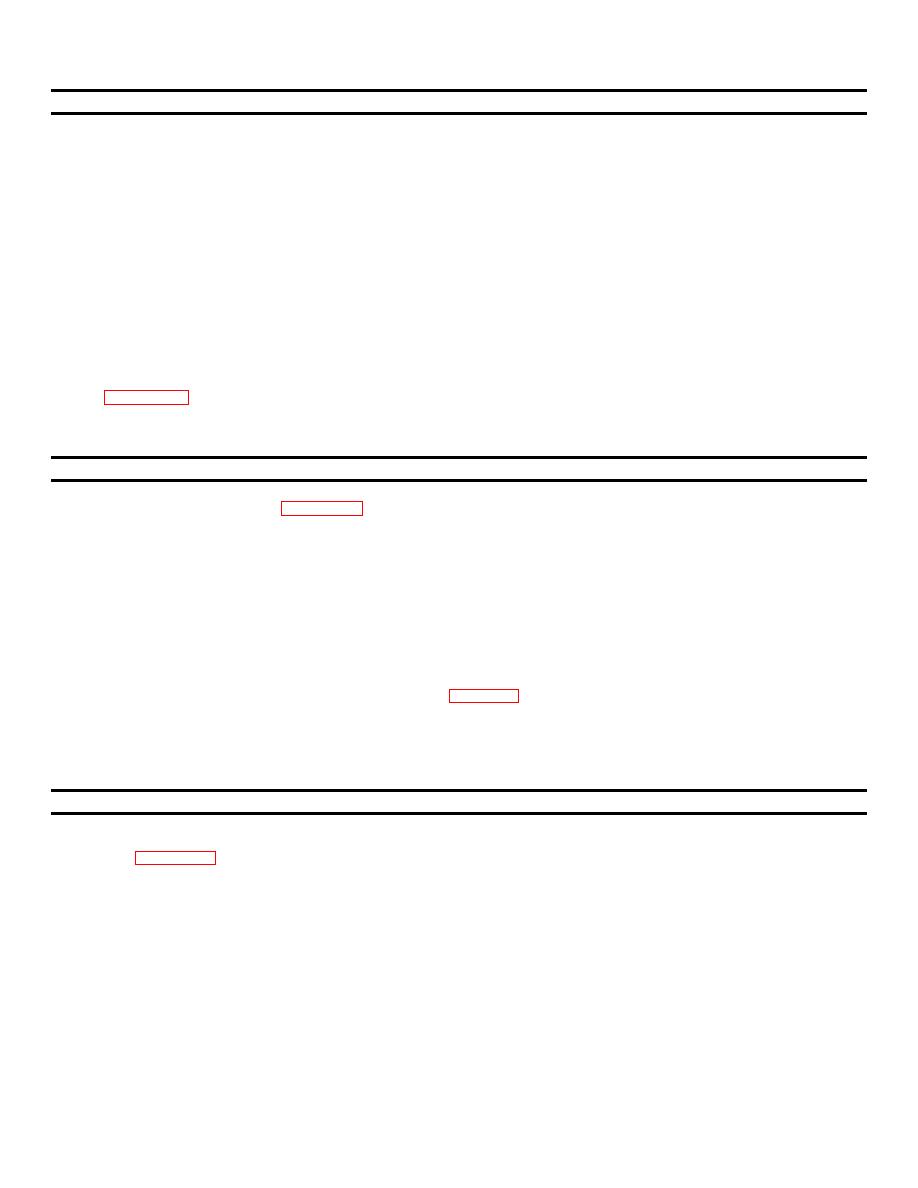 |
|||
|
|
|||
|
|
|||
| ||||||||||
|
|
 TM 9-2330-202-14&P
4-20.
INSPECTION INSTRUCTIONS (continued).
c.
Inspect metal lines, flexible lines (hoses), and metal fittings and connectors for the following:
1.
Metal lines-sharp kinks, cracks, bad bends, and dents.
2.
Flexible lines-fraying, evidence of leakage, and loose metal fittings or connectors.
3.
Metal fittings and connectors-thread damage and worn or rounded hex heads.
d.
Inspect castings, forgings, and machined metal parts for the following:
1.
Machined surfaces-nicks, burrs, raised metal, wear, and other damage.
2.
Inner and outer surfaces-breaks and cracks.
e.
Inspect fittings and connectors for leaks by coating fittings and connectors with solution of detergent (Item 5,
f.
Inspect bearings in accordance with TM 9-214.
TAGGING PARTS.
a.
Use marker tags (Item 16, Appendix F) to identify all electrical wires, hydraulic lines, and any other parts that may
be hard to identify or replace later. Fasten a tag to the part during removal by wrapping a wire fastener around or
through the part and twisting the ends together. Position tags to be out of the way during cleaning, inspection,
and repair. Mark tags with a pencil, pen, or marker.
b.
Whenever possible, identify each electrical wire with the number of the terminal or wire to which it connects. If no
markings can be found, tag both wires or wire and terminal using the same identifying mark for both. If you cannot
tag a wire because it must fit through a small hole or you cannot reach it, write down a description of the wire and
the point at which it connects or draw a simple diagram on paper. Be sure to write down enough information so
you will be able to properly connect wires (or wire and terminal) during assembly. If you need to identify a loose
wire, look for identifying numbers near the end of the wire, stamped on a permanent metal tag. Compare this
number to the wire numbers on the wiring diagram (para 4-31).
c.
Identify and tag other parts as required by name and location.
d.
Remove all tags when finished.
PRESERVATION OF PARTS.
Unpainted metal parts that will not be installed immediately after cleaning should be covered with a thin coat of lubricating
oil (Item 12, Appendix F).
|
|
Privacy Statement - Press Release - Copyright Information. - Contact Us |